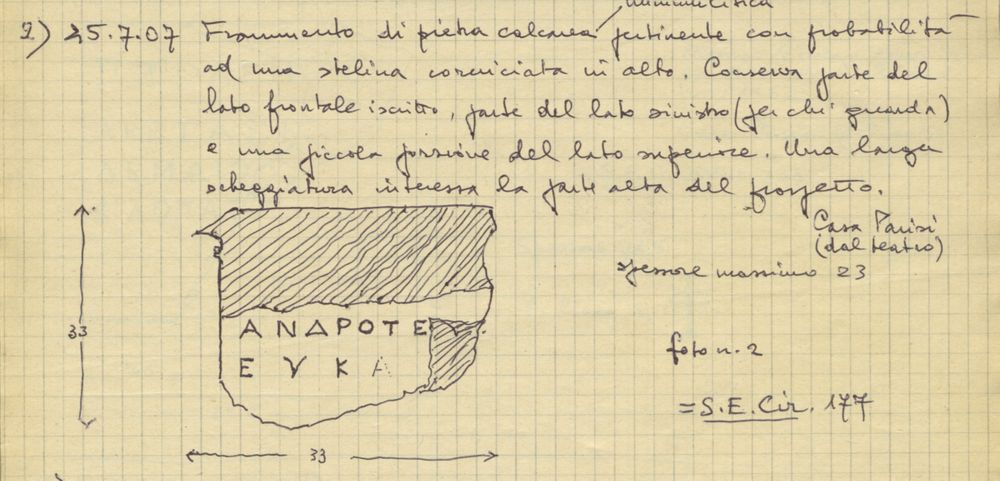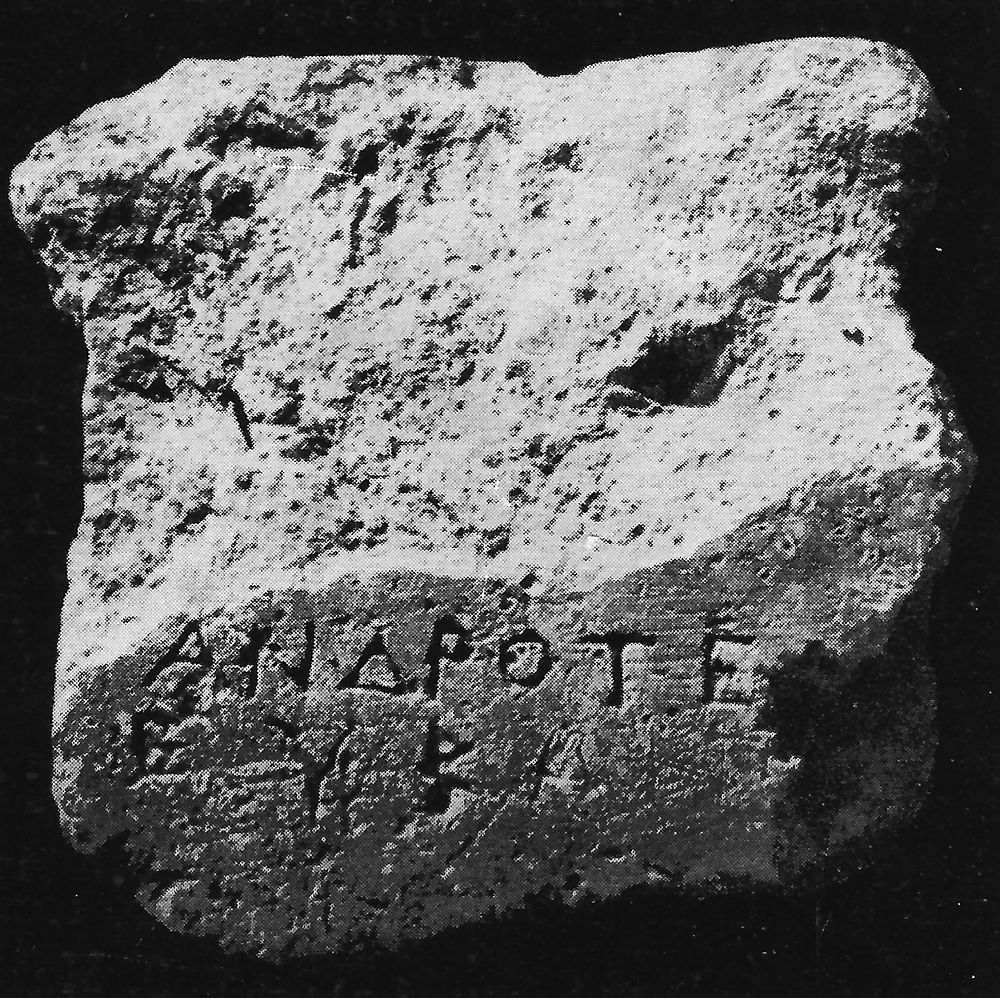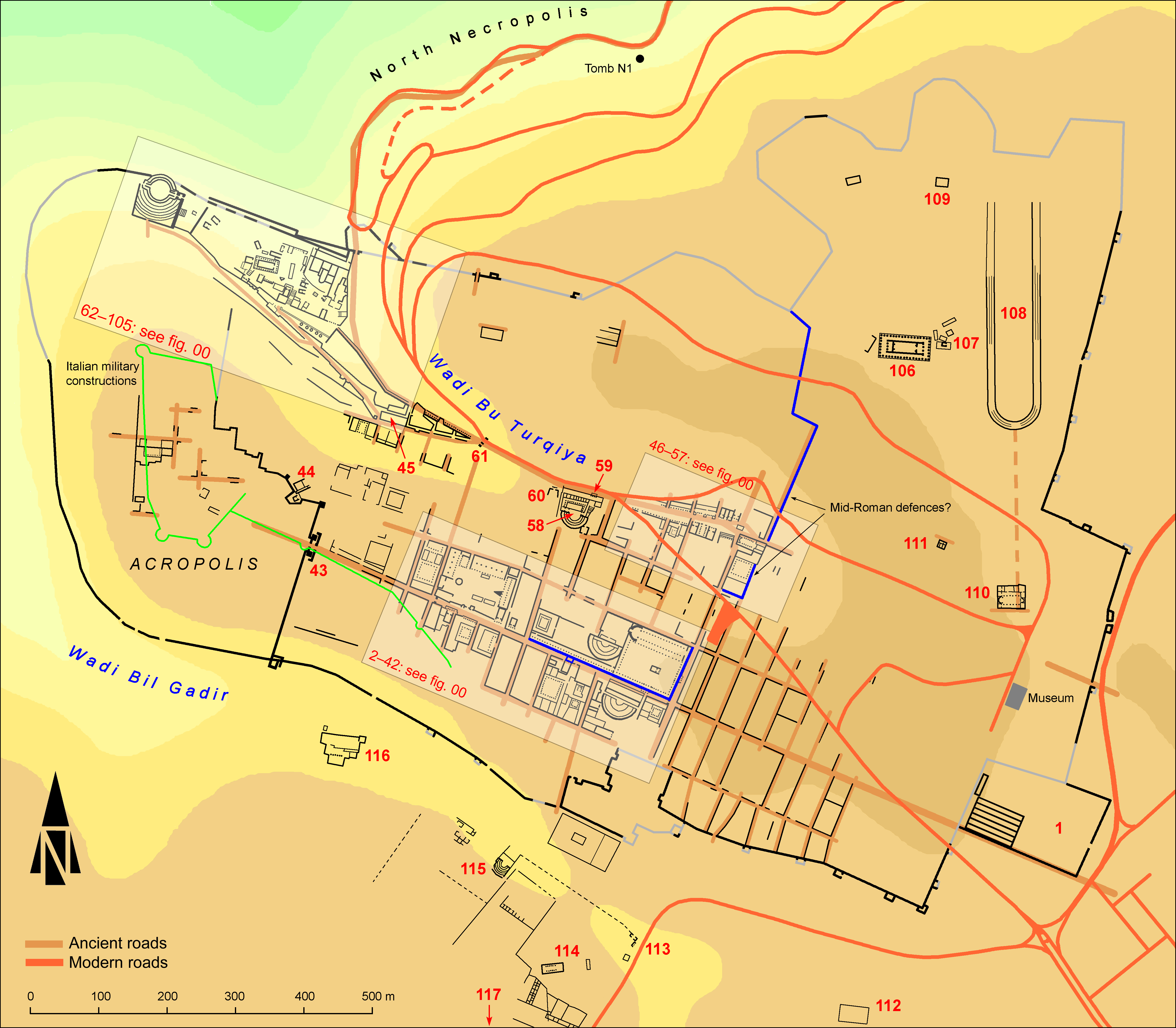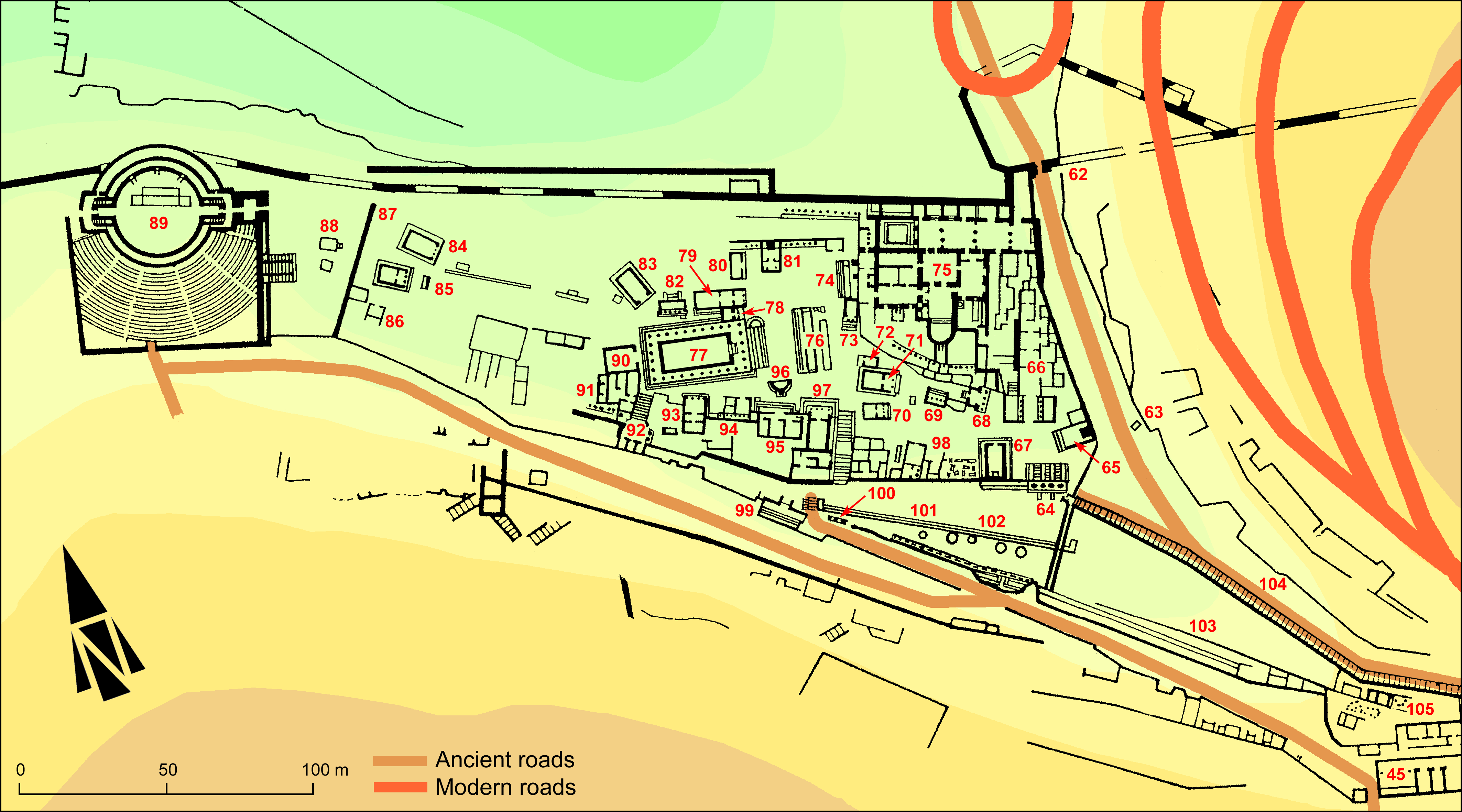EpiDoc XML:
IGCyr1012002
Trismegistos ID:
738524
Source description
Support: Fragmentary base of nummulitic limestone, broken off on all sides, except probably at left, (w: 0.33 × h: 0.33 × d: at least 0.23).
Layout: Inscribed on the face in probably two lines.
Letters: Unfinished work of the cutter: the letters were lightly sketched and only those of line 1 and the three first letters of line 2 were deeply and not very carefully cut; smaller omicron, widely open calice-shaped upsilon.
Date: Perhaps second century BC (lettering).
Findspot: Found probably between 1932 and 1935 at Cyrene ➚: Sanctuary of Apollo ('Piazzale'), in the Greek Theatre.
Place of origin: Findspot.
Last recorded location: Seen by L. Gasperini in 2007 in Shahat: in the Casa Parisi, which is part of the Cyrene Museum.
Text constituted from: Transcription from previous editor and Gasperini's archive (CDL).
Bibliography
SECir, 177 (photo); IGCyr 101200 ➚.
Text
Apparatus
French translation
Androtélès fils d'Euka[---].
English translation
Androteles son of Euka[---].
Italian translation
Androteles figlio di Euka[---].
Commentary
The stone was known to Pugliese Carratelli only through a photograph in the Department of Antiquities Archive, which C. Dobias-Lalou was also able to see in 1982 and could not find again later. Nor could she find the stone.
Thanks to the drawing and description kept in Gasperini's archive and kindly provided by the University of Macerata, we now know the material and dimensions of the stone.
Pugliese Carratelli mentioned that the inscription was unfinished, a fact that is confirmed only for the end of line 2 by Gasperini's sketch. The latter does not mention any trace of letters at a supposed line 3, which might have never existed. We follow the opinion of Gasperini, who saw the stone.
Found inside or near the Greek Theatre, the inscription seems to be honorary, but its unfinished condition does not help to be quite sure.
CC BY-NC-SA 4.0 Deed Attribution-NonCommercial-ShareAlike 4.0 International License.
All citation, reuse or distribution of this work must contain a link back to DOI: https://doi.org/10.60760/unibo/igcyrgvcyr2 and the filename (IGCyr000000 or GVCyr000), as well as the year of consultation.



